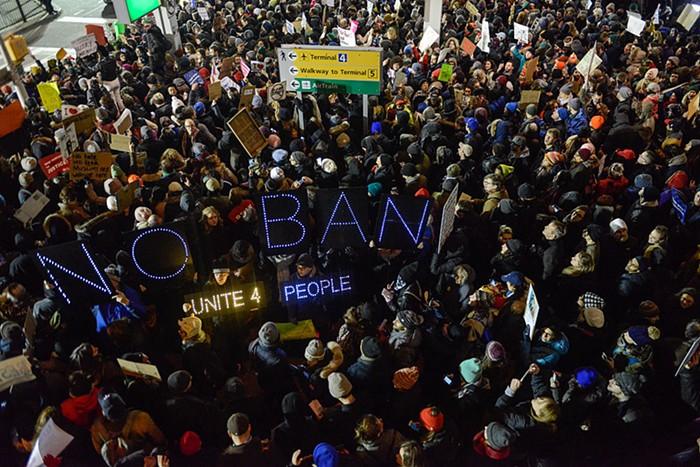Column: Trump’s executive order “Protecting the Nation” may have the opposite effect
February 7, 2017
Over the past few weeks after President Trump’s inauguration, he has passed seven executive orders. The most controversial order perhaps being “Protecting the Nation from Foreign Terrorist Entry into the United States,” which arguably could have the exact opposite effect of what it is meant to have.
This order suspended all refugees entering the US for four months and indefinitely for those specifically from Syria. These are the refugees currently in the most dire need of help, so the argument that the US should not let in refugees because an extremist may conceal himself as a refugee to gain access to US soil is a bit of a reach. Although this could potentially happen, the likelihood that embracing refugees will cause more harm, that of potential terrorist attacks, than good, that of safety and protection for those escaping the terrors of war, is very minimal.
However, during the four months, Trump plans to come up with a more effective and uniform vetting system that will use in-person interviews, a singular identity database to catch duplicate applications, forms to identify fraudulent answers, and a “mechanism” to ensure the applicant will contribute to society and will not commit criminal or terrorist acts. This new vetting process sounds great, and I am all for a strong screening process to keep out those few looking to harm US citizens, but the terms laid out are quite vague as to what “mechanism” will prove the true intent of a refugee or person applying for visas/citizenship. The process to citizenship is already a very tedious hard-earned matter that can take up to two years, so hopefully, President Trump’s new screening process will make for a much more time efficient endeavor, though it does not seem this way.
After the four month period restricting refugees from entering ends, the executive order cuts the number of refugees permitted to enter the US from 110,000 to 50,000 this year. I can only assume that these allowed refugees will be heavily evaluated and handpicked individuals. On this note, although the executive order does not specifically mention discriminating against particular religions, i.g. Islam, it does mention prioritizing individuals “on the basis of religious-based persecution, provided that the religion of the individual is a minority religion in the individual’s country of nationality,” i.g. Christianity.
Not only did the order bar refugees, but also any citizens, even those with visas or green cards, that are from Muslim majority nations including Iran, Iraq, Lybia, Somalia, Sudan, Syria, and Yemen from entering the US. These countries were previously in legislation during Obama’s administration to be more carefully vetted. Although the Trump administration hesitates to call it a “Muslim ban,” the fact that these countries do have a Muslim majority makes this seem like a ban on Muslims. Trump’s claim for selecting these particular countries is that in lieu of 9/11 and threats from the ISIS, the US faces a large threat of potential terror. However, one of the most controversial parts of these listed countries is that Suadi Arabia is not on this list, since they are where most of the 9/11 terrorists originated from. There is much speculation that Trump may have left it off the list, although they are the biggest threat of potential ISIS terrorists, because he has strong business ties there.
Finally, the fact that these countries are being heavily targeted with restrictions may bring about the opposite effect of the national protection it is supposed to create. Because every terrorist attack since 9/11 has been enacted by home-grown terrorists, banning these specific countries may not even deter terrorist attacks. Instead, this “Muslim Ban” could potentially aggravate and spur radical responses.




